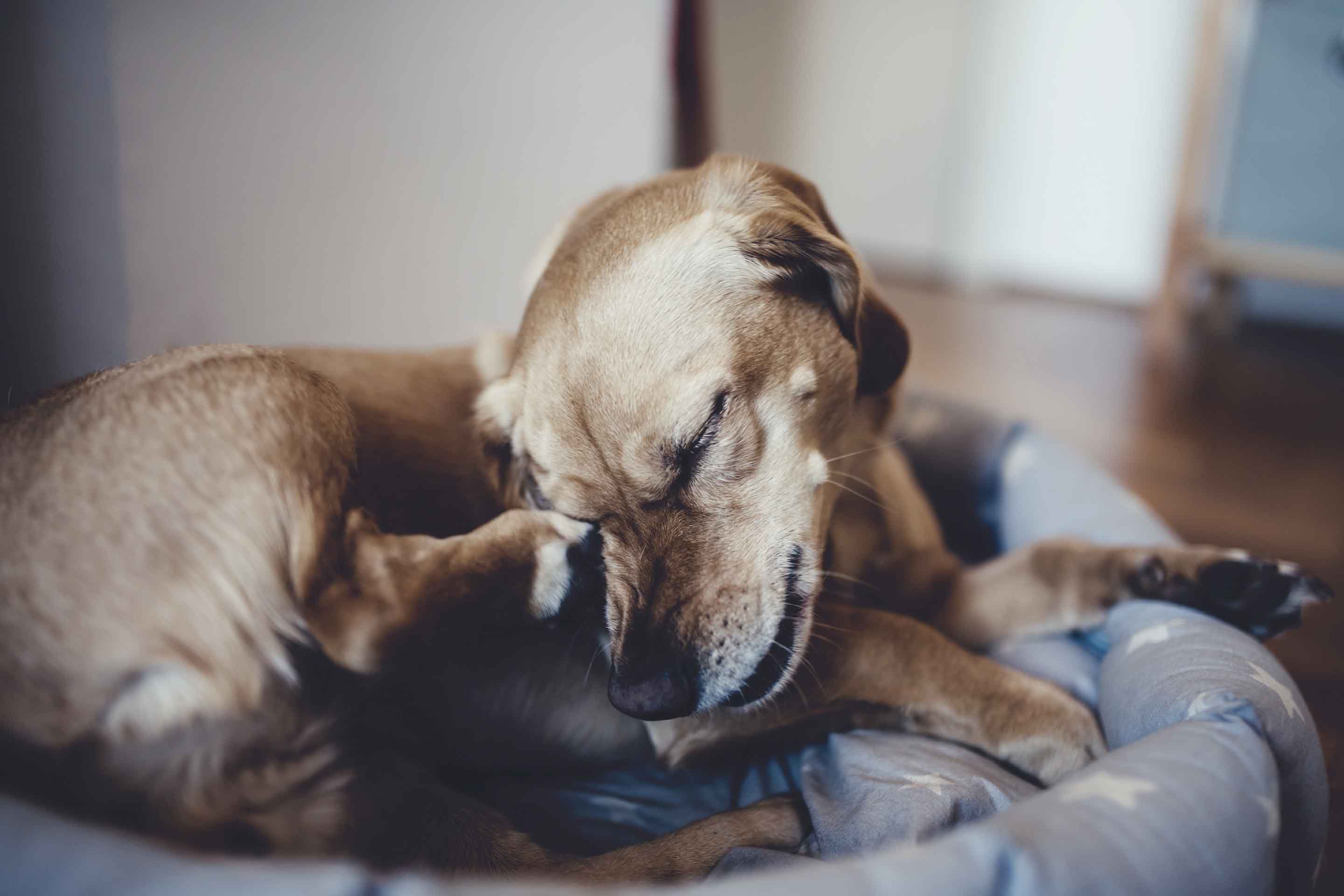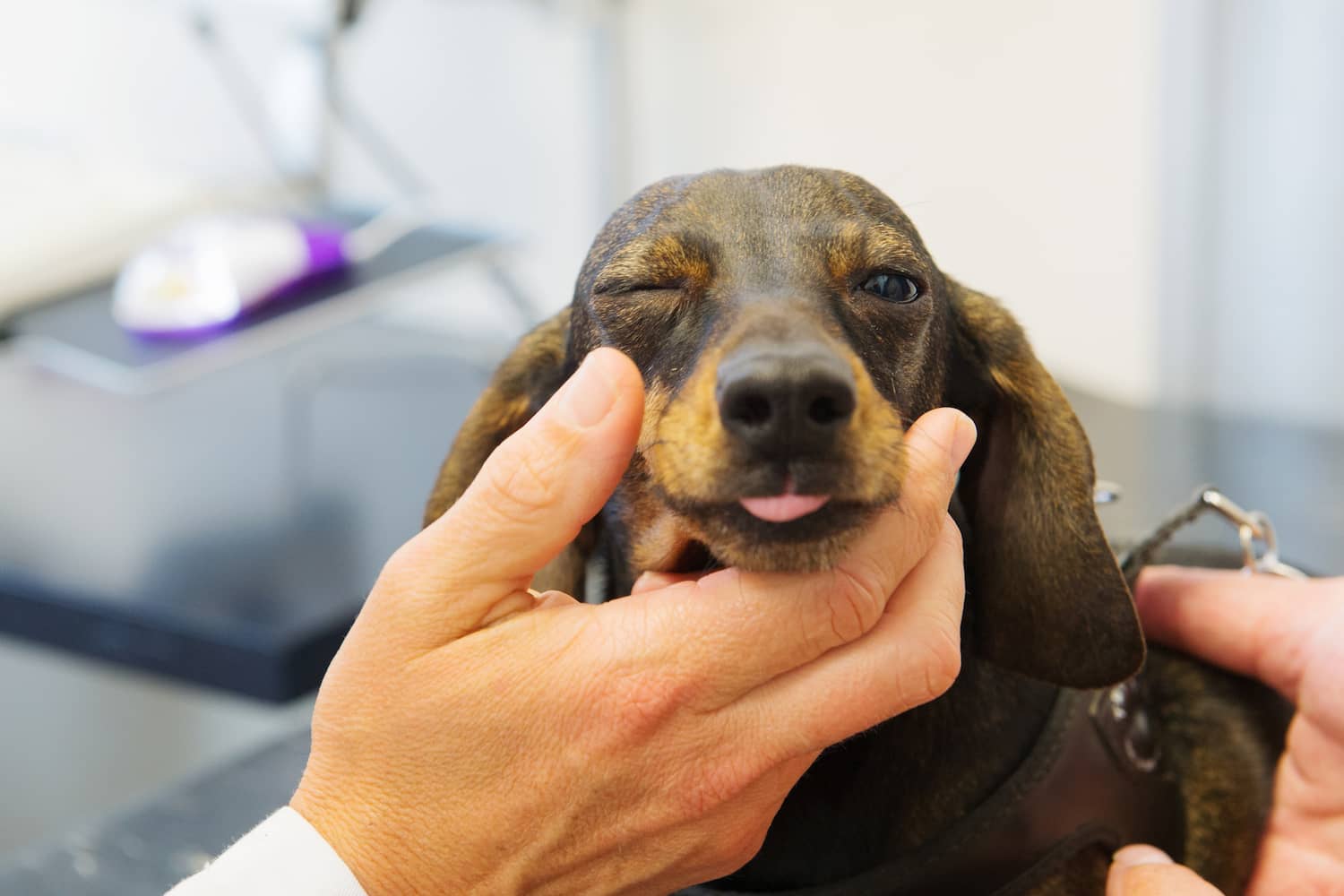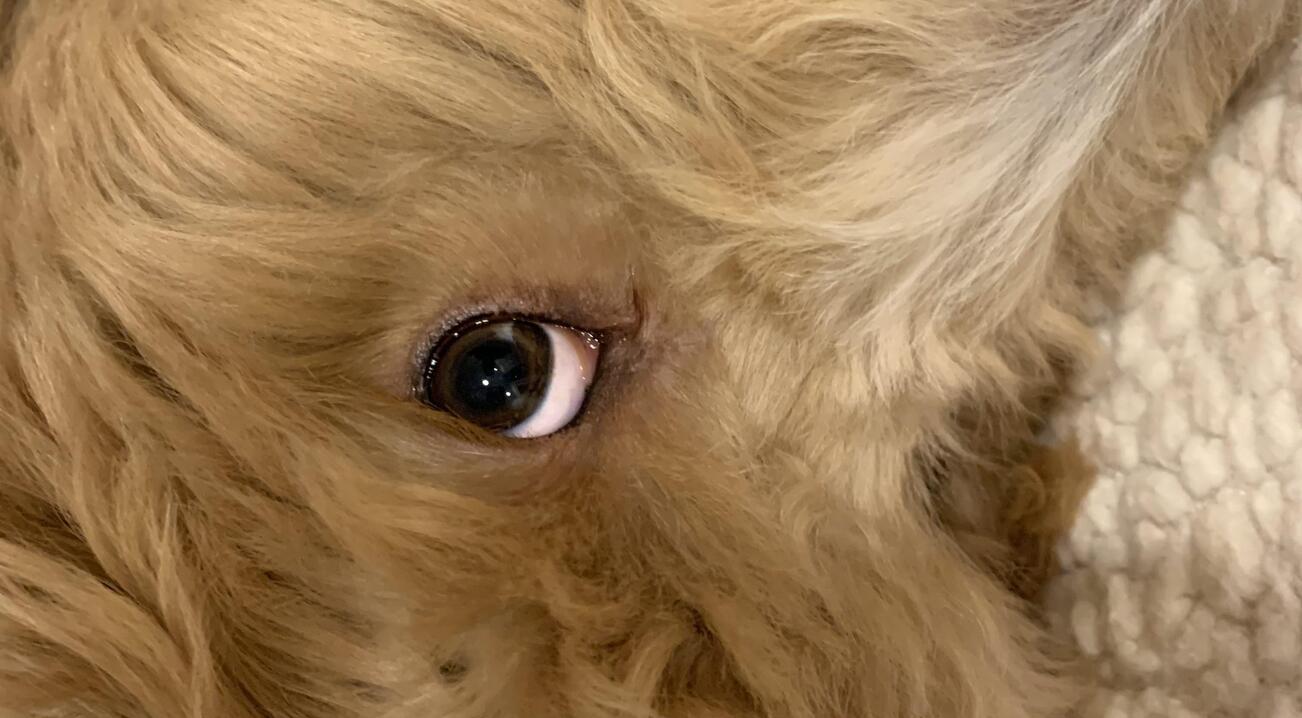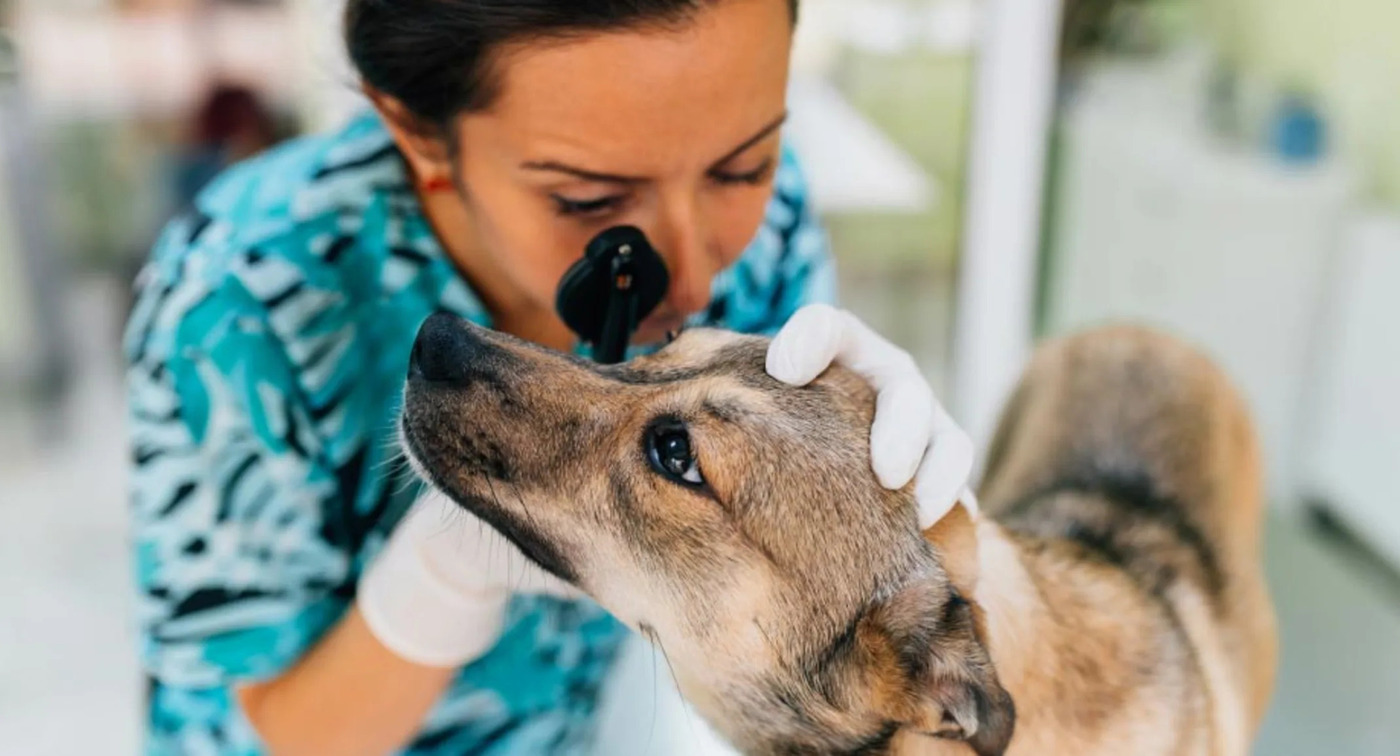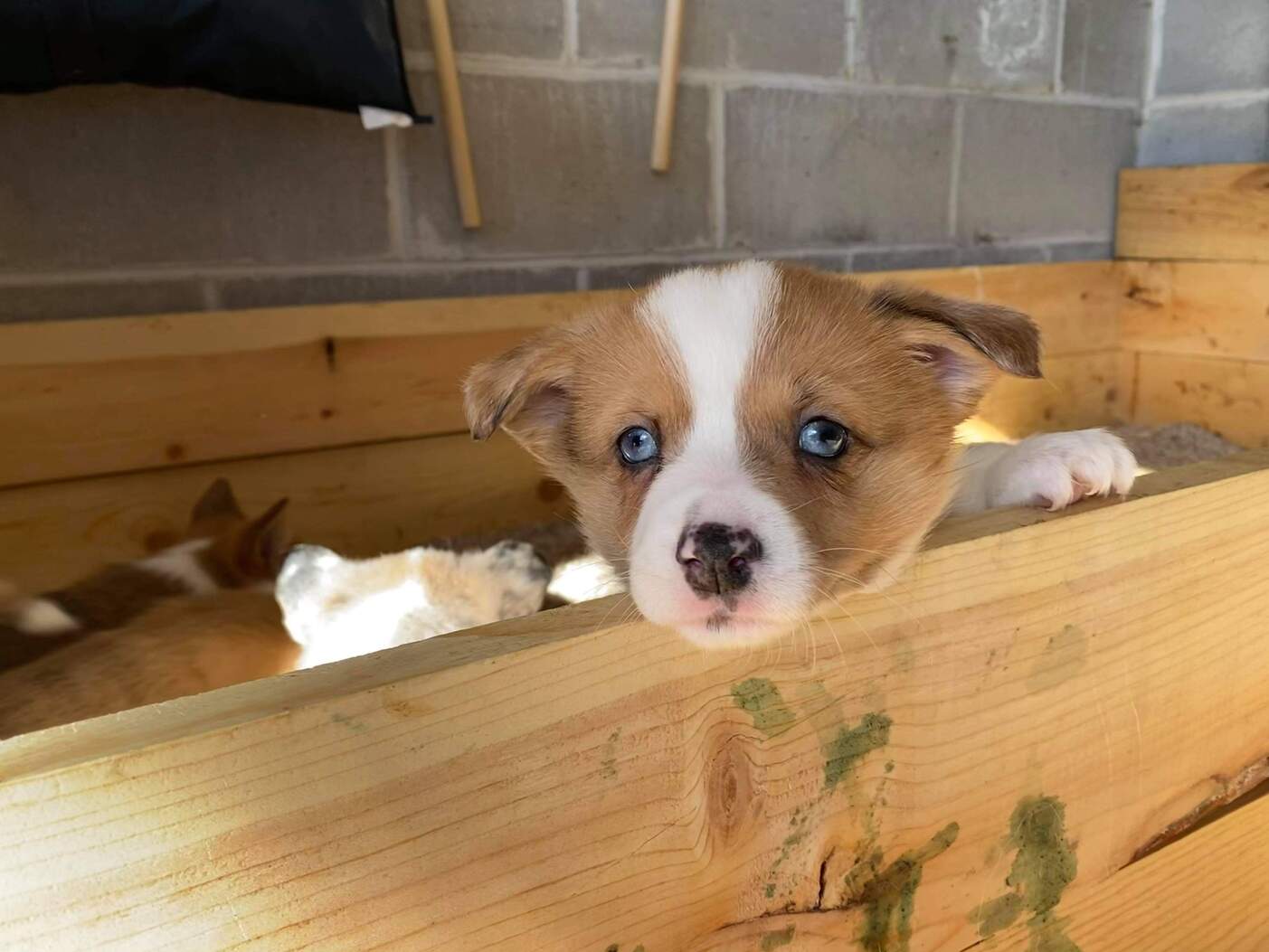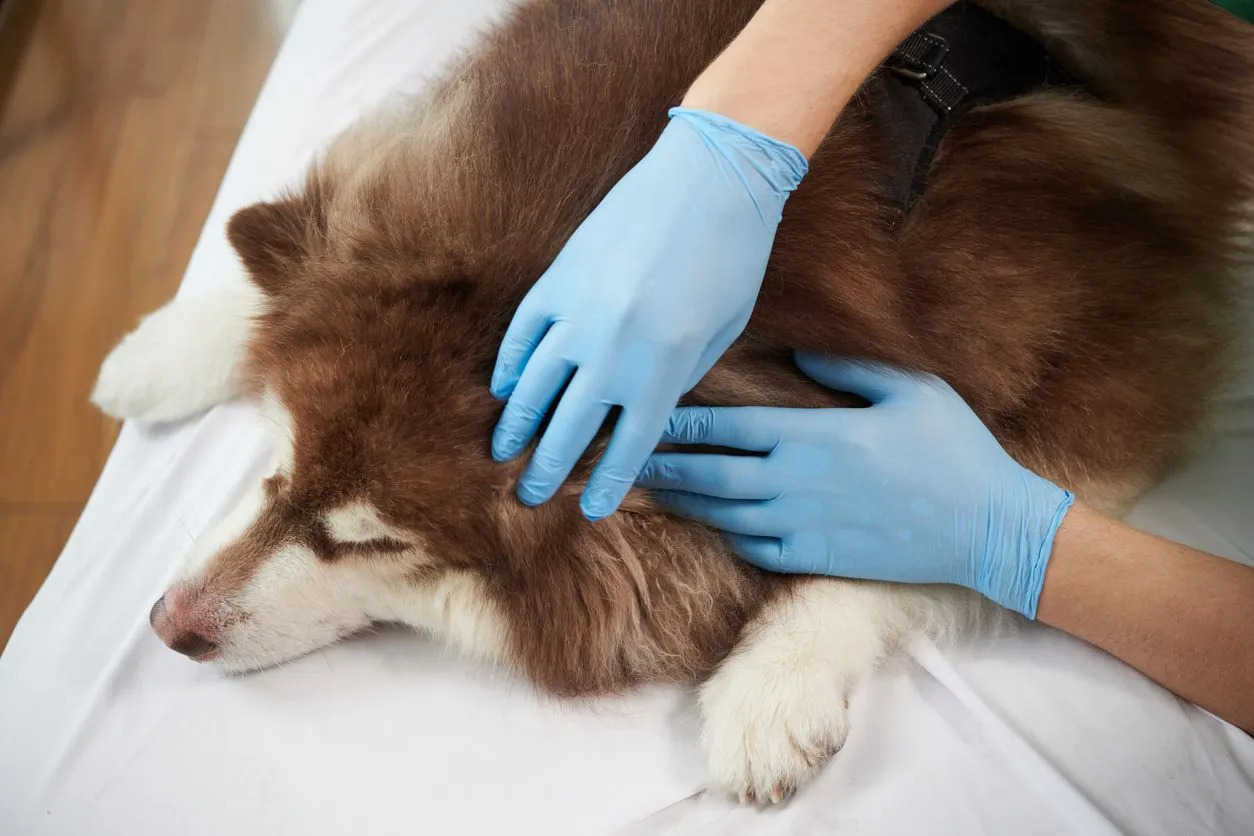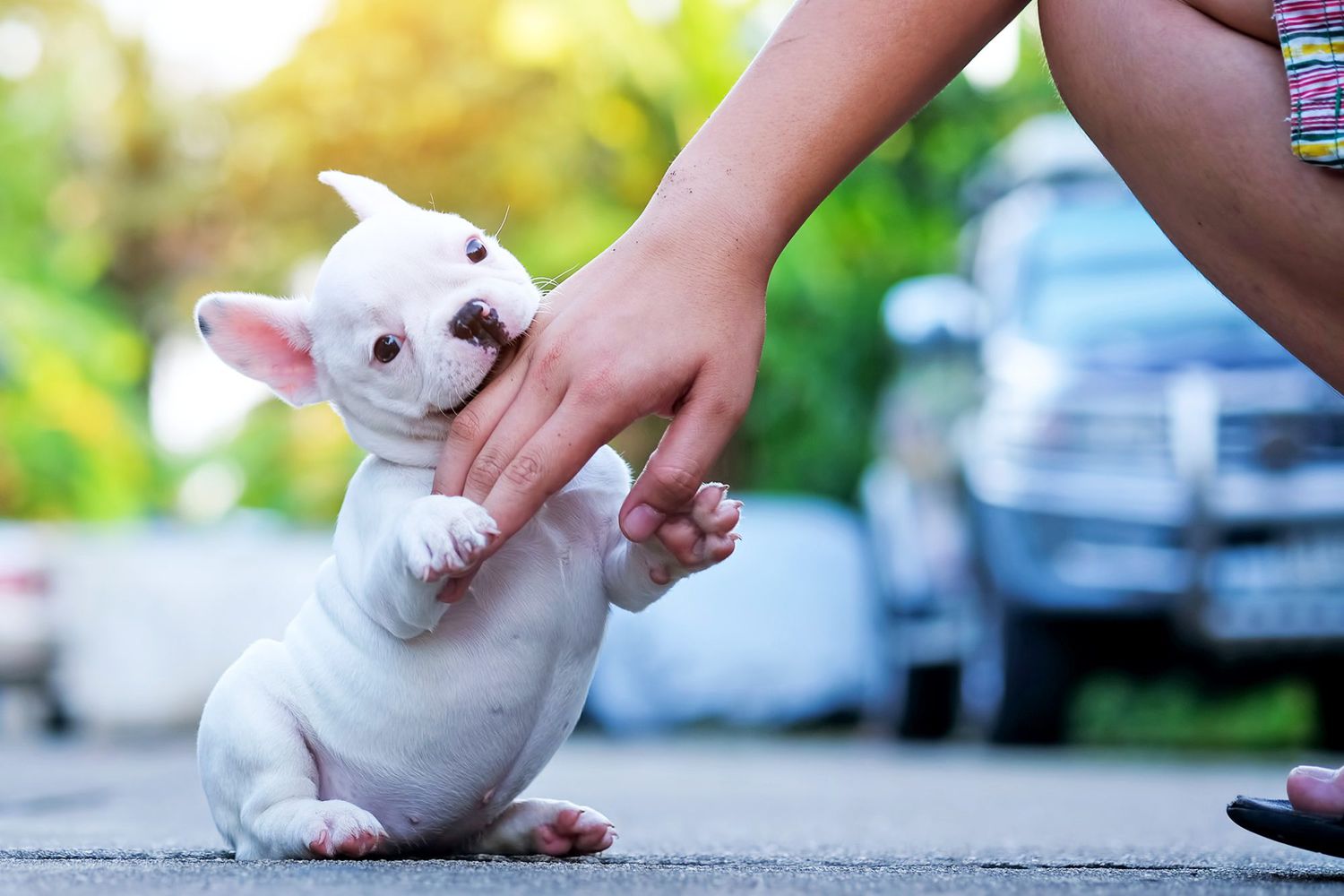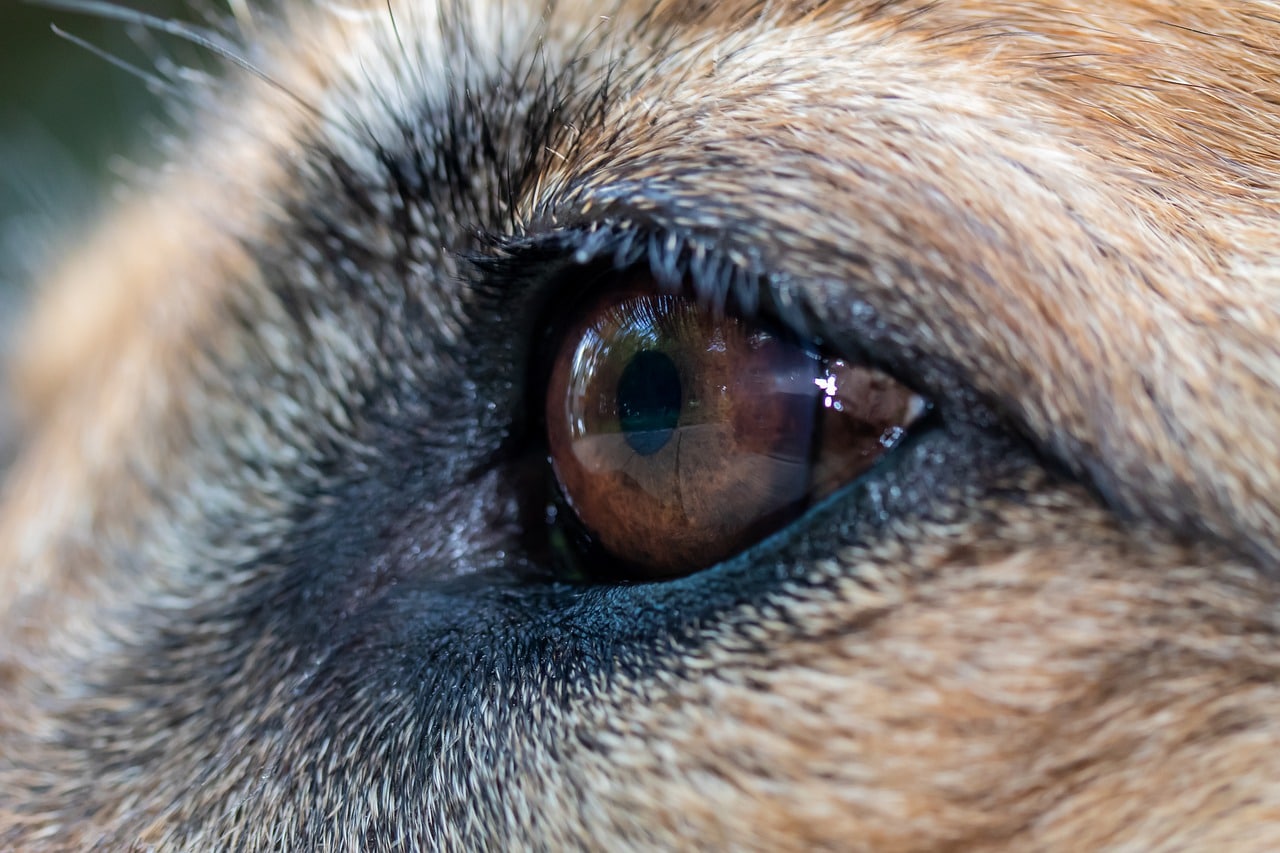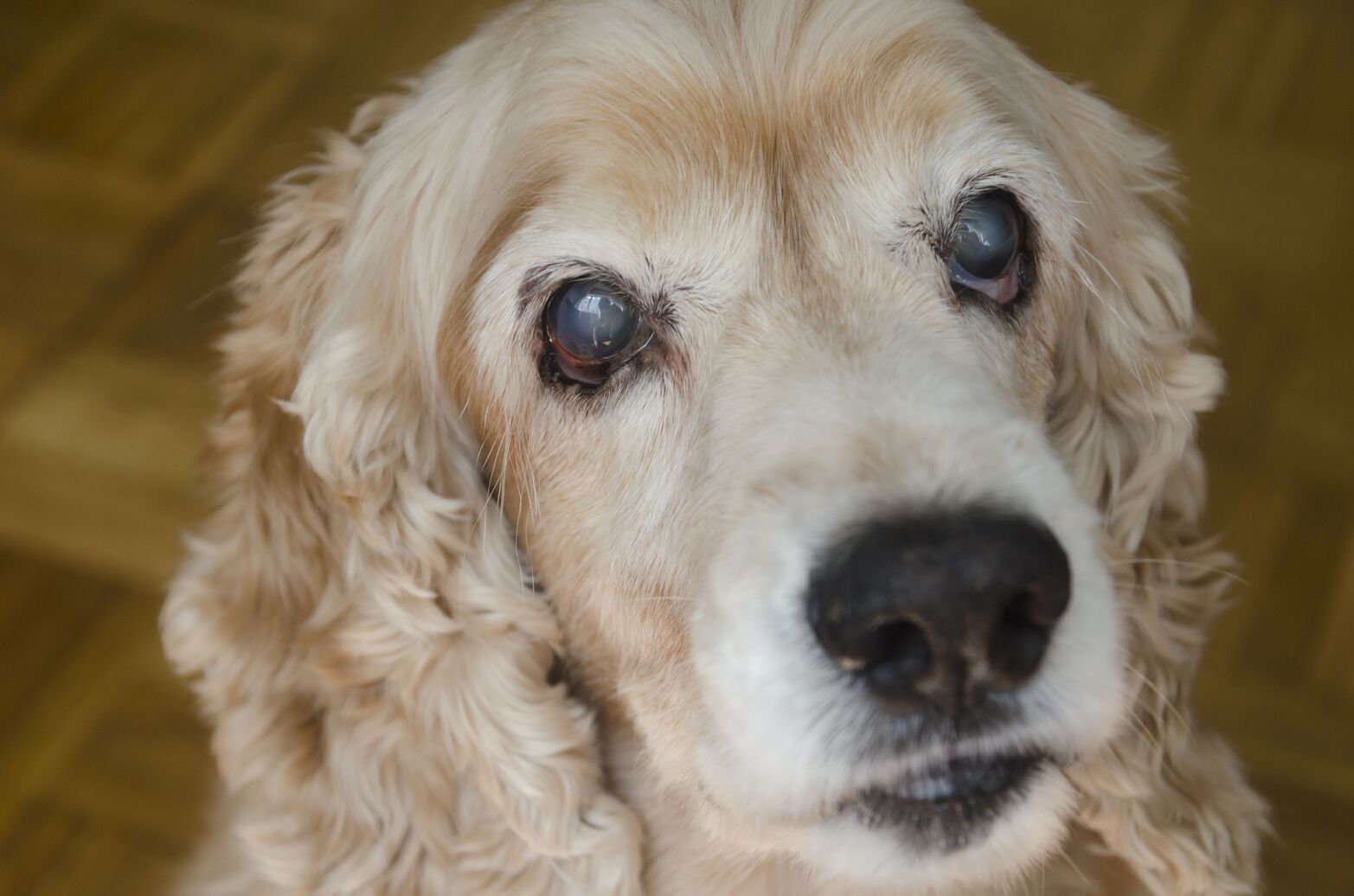Home>Health & Wellness>Common Health Issues>Eye and Ear Health>Why Does My Dog Have One Dilated Eye?
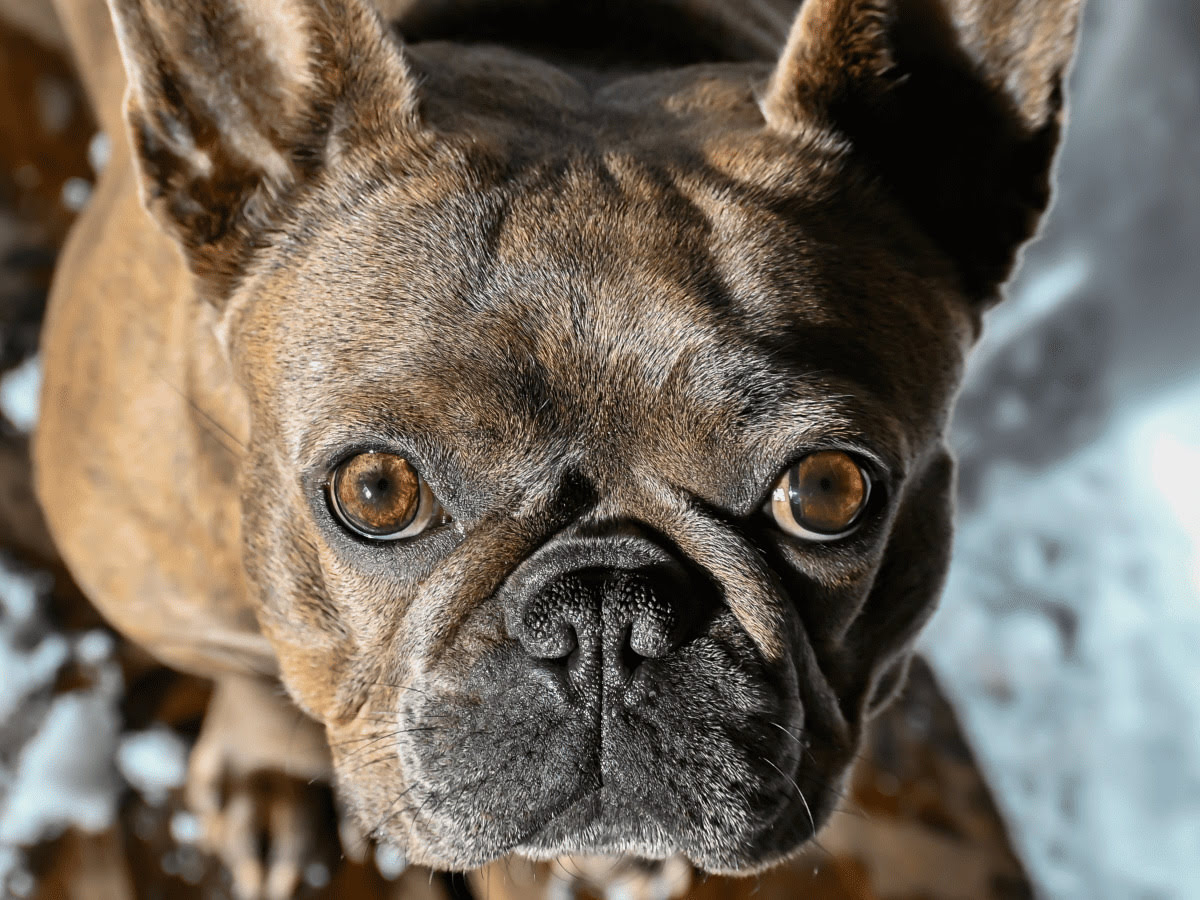

Eye and Ear Health
Why Does My Dog Have One Dilated Eye?
Modified: February 21, 2024
Learn about the causes and treatment of a dog's dilated eye, and how it relates to their overall eye and ear health. Find expert advice on eye and ear health for your furry friend.
(Many of the links in this article redirect to a specific reviewed product. Your purchase of these products through affiliate links helps to generate commission for Pawsomeoldies.com, at no extra cost. Learn more)
Table of Contents
Introduction
When you look into your furry friend's eyes, you can often tell what they're feeling. Those big, soulful eyes can convey joy, curiosity, and even a hint of mischief. However, if you notice that one of your dog's eyes is dilated while the other remains normal, it can be a cause for concern. Just like in humans, a dog's eyes can provide valuable insights into their overall health. Understanding the potential reasons behind this asymmetry can help you address any underlying issues and ensure your dog's well-being.
Dilated pupils, the black centers of the eyes, can be a sign of various health conditions in dogs. While it's normal for a dog's pupils to dilate in dim lighting or in response to excitement, fear, or certain medications, the presence of one dilated eye when the other remains unaffected may indicate an underlying problem. This asymmetry in pupil size, known as anisocoria, warrants attention and further evaluation.
In this article, we will delve into the potential causes of one dilated eye in dogs, the associated symptoms, available treatment options, and when it's crucial to seek professional veterinary care. By gaining a deeper understanding of this phenomenon, you can become better equipped to recognize signs of distress in your canine companion and take appropriate action to safeguard their ocular and overall health.
Understanding the reasons behind one dilated eye in dogs is essential for pet owners to provide timely care and support. Let's explore the potential underlying factors and shed light on this important aspect of canine health.
Read more: Why Does My Dog Have A Bump By Her Eye
Causes of One Dilated Eye in Dogs
-
Injury or Trauma: A common cause of one dilated eye in dogs is trauma or injury to the eye or head. Blunt force trauma, foreign objects, or bites from other animals can lead to pupil dilation. This can indicate damage to the nerves that control the eye's response to light, resulting in anisocoria.
-
Inflammation or Infection: Inflammatory conditions such as uveitis, which affects the middle layer of the eye, or infections like canine distemper can lead to one dilated eye in dogs. These conditions can cause pain, redness, and light sensitivity, leading to dilation of the affected eye.
-
Glaucoma: Glaucoma, a condition characterized by increased pressure within the eye, can cause one dilated eye in dogs. This pressure can lead to optic nerve damage and subsequent pupil dilation. Glaucoma is a serious condition that requires prompt veterinary attention to prevent vision loss.
-
Neurological Disorders: Certain neurological issues, such as brain tumors, encephalitis, or nerve damage, can result in anisocoria in dogs. These conditions can disrupt the normal function of the nerves that control pupil size, leading to uneven dilation.
-
Ingestion of Toxins: Exposure to certain toxins or chemicals can lead to one dilated eye in dogs. Ingestion of toxic plants, medications, or household chemicals can affect the nervous system, leading to abnormal pupil size and other neurological symptoms.
-
Underlying Health Conditions: One dilated eye in dogs can also be a symptom of underlying health issues such as high blood pressure, diabetes, or cardiovascular disease. These systemic conditions can impact the regulation of pupil size and contribute to anisocoria.
-
Genetic Factors: In some cases, certain dog breeds may be predisposed to conditions that can cause one dilated eye. For example, Siberian Huskies are known to be susceptible to a condition called Siberian Husky Uveodermatologic Syndrome (SHUD), which can lead to uveitis and subsequent pupil dilation.
Understanding the potential causes of one dilated eye in dogs is crucial for identifying the underlying issue and seeking appropriate veterinary care. By recognizing the various factors that can contribute to anisocoria in dogs, pet owners can take proactive steps to address their canine companion's ocular health and overall well-being.
Symptoms of One Dilated Eye in Dogs
When a dog presents with one dilated eye, it's essential to be attentive to accompanying symptoms that can provide valuable insights into the underlying cause. While the presence of anisocoria itself is a primary indicator of ocular or neurological abnormalities, observing additional symptoms can aid in the diagnostic process and guide appropriate treatment measures.
-
Change in Behavior: Dogs with one dilated eye may exhibit alterations in their behavior. They might appear restless, agitated, or display signs of discomfort, indicating potential pain or distress associated with the affected eye.
-
Sensitivity to Light: Photophobia, or sensitivity to light, can be observed in dogs with one dilated eye. They may squint, avoid bright light, or seek darker environments to alleviate discomfort caused by the imbalance in pupil size.
-
Eye Discharge or Redness: The affected eye may display abnormal discharge, such as excessive tearing or pus-like secretions. Additionally, redness or inflammation in the eye can accompany anisocoria, signaling underlying inflammatory or infectious conditions.
-
Vision Changes: Dogs may experience vision impairment or changes in visual acuity in the eye with dilation. They might bump into objects, have difficulty navigating familiar spaces, or display hesitancy in responding to visual cues.
-
Head Tilt or Abnormal Eye Movements: Anisocoria can be accompanied by head tilting or abnormal eye movements, such as nystagmus (involuntary eye jerking). These manifestations can indicate neurological involvement and warrant thorough evaluation.
-
Pain or Discomfort: Dogs with one dilated eye may exhibit signs of pain or discomfort, such as pawing at the affected eye, rubbing their face against surfaces, or vocalizing distress.
-
Systemic Symptoms: In cases where anisocoria is linked to underlying systemic conditions, dogs may display additional systemic symptoms. These can include increased thirst and urination, weight loss, lethargy, or changes in appetite.
By recognizing these symptoms in conjunction with one dilated eye, pet owners can provide crucial information to veterinary professionals, facilitating accurate diagnosis and tailored treatment plans. Prompt recognition of these symptoms can lead to timely intervention, ultimately promoting the well-being of canine companions facing ocular and neurological challenges.
Treatment for One Dilated Eye in Dogs
The treatment for one dilated eye in dogs is contingent upon identifying the underlying cause through comprehensive veterinary evaluation. Upon recognizing anisocoria in a canine companion, prompt consultation with a veterinarian is imperative to initiate appropriate measures and address the root of the issue. The treatment approach may encompass the following strategies based on the specific diagnosis:
-
Medication and Topical Treatments: In cases where the dilation is attributed to inflammatory conditions or infections, such as uveitis, veterinarians may prescribe anti-inflammatory medications, antibiotics, or topical treatments to alleviate ocular discomfort, reduce inflammation, and combat underlying infections.
-
Ocular Support and Pain Management: Dogs experiencing discomfort or pain associated with the dilated eye may benefit from supportive measures and pain management strategies. Veterinarians may recommend eye drops, ointments, or oral medications to alleviate discomfort and promote ocular healing.
-
Surgical Intervention: In instances of traumatic injury, glaucoma, or certain structural abnormalities contributing to anisocoria, surgical intervention may be necessary. Procedures such as eye surgery, drainage of intraocular fluid in cases of glaucoma, or removal of foreign objects can be vital in restoring ocular function and mitigating further complications.
-
Management of Underlying Conditions: If the one dilated eye is linked to systemic health issues such as high blood pressure, diabetes, or neurological disorders, comprehensive management of these conditions is essential. This may involve dietary modifications, medication administration, and close monitoring to address the systemic factors contributing to anisocoria.
-
Environmental and Lifestyle Adjustments: In certain cases, environmental modifications may be recommended to minimize potential triggers for ocular distress. This can include reducing exposure to bright light, ensuring a safe and secure living environment to prevent further injuries, and implementing lifestyle adjustments to support the overall well-being of the affected dog.
-
Ongoing Monitoring and Follow-Up Care: Following the initiation of treatment, diligent monitoring and follow-up care are crucial to assess the dog's response to interventions, monitor ocular health, and address any emerging concerns. Veterinarians may schedule regular check-ups, ocular examinations, and diagnostic tests to track progress and make informed adjustments to the treatment plan as needed.
It is important to emphasize that the treatment approach for one dilated eye in dogs is highly individualized, tailored to the specific diagnosis, and guided by the expertise of veterinary professionals. Pet owners are encouraged to collaborate closely with their veterinarians, adhere to prescribed treatment regimens, and provide a supportive environment to facilitate the well-being and recovery of their canine companions facing this ocular challenge.
When to See a Veterinarian
Recognizing the significance of timely veterinary intervention is paramount when a dog presents with one dilated eye. Prompt consultation with a veterinarian is crucial under the following circumstances:
-
Sudden Onset: If the asymmetry in pupil size is sudden and unexplained, seeking veterinary attention is imperative. Abrupt changes in pupil dilation can signify acute trauma, neurological involvement, or ocular emergencies that necessitate immediate evaluation.
-
Persistent Anisocoria: When one dilated eye persists over time, it warrants veterinary assessment. Continuous anisocoria can indicate underlying health conditions that require thorough examination and targeted interventions to prevent potential complications.
-
Accompanying Symptoms: The presence of additional symptoms such as eye discharge, redness, behavioral changes, or signs of discomfort alongside one dilated eye necessitates veterinary evaluation. These accompanying manifestations can offer vital clues to the underlying cause and guide appropriate treatment measures.
-
History of Trauma or Injury: If the dog has a history of head trauma, eye injury, or exposure to potential toxins, veterinary consultation is essential. Previous incidents of trauma or toxin exposure can contribute to anisocoria and require professional assessment to address ocular and neurological implications.
-
Vision Changes: Any noticeable changes in the dog's vision, such as bumping into objects, reluctance to navigate familiar spaces, or apparent visual impairment in the eye with dilation, warrant veterinary attention. Evaluating vision changes is crucial in determining the extent of ocular involvement and formulating tailored treatment strategies.
-
Systemic Symptoms: If the dog exhibits systemic symptoms such as lethargy, changes in appetite, increased thirst, or weight loss alongside one dilated eye, veterinary consultation is vital. These systemic manifestations can indicate underlying health issues that necessitate comprehensive assessment and management.
-
Recurrent Anisocoria: In cases where anisocoria recurs intermittently or becomes a persistent concern, seeking veterinary guidance is essential. Recurrent episodes of one dilated eye can indicate chronic underlying conditions that require diligent monitoring and targeted interventions.
By recognizing these indicators and promptly seeking veterinary care, pet owners can facilitate early diagnosis, tailored treatment, and optimal support for their canine companions facing the challenge of one dilated eye. Collaborating closely with veterinary professionals is instrumental in safeguarding the ocular and overall well-being of dogs experiencing this concerning manifestation.
